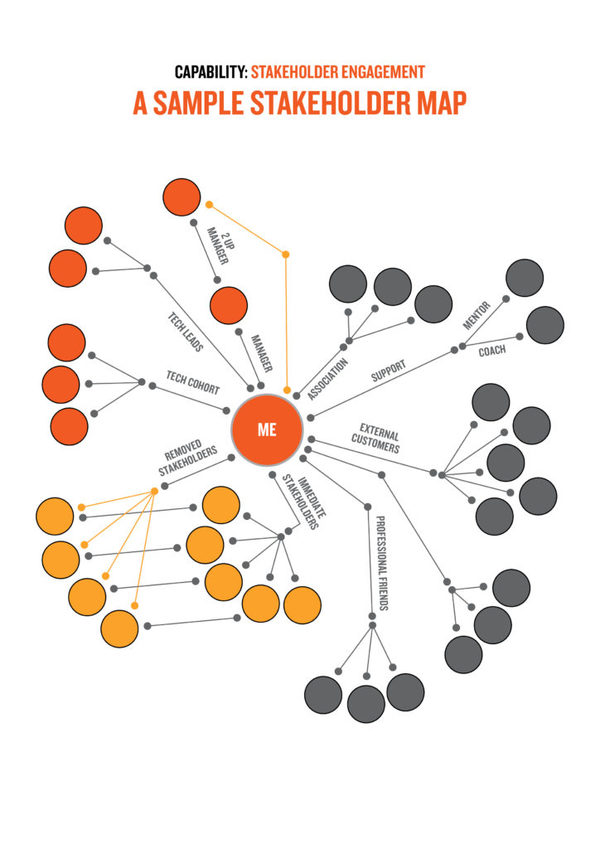As experts we work in highly complex ecosystems that are shifting and adapting all the time. To become Master Experts we need to work hard to identify and service all our stakeholder groups, and take a strategic approach to prioritizing who we work with and why.
In our work with experts, helping them build a stakeholder map is a core activity on most of our programs. Why? Because, for experts to be able to strategically manage stakeholder relationships, we need to know who our stakeholders are, how many of them there are, how important each stakeholder is, and who will be important in the future.
The stakeholder’s importance is usually a good indicator of the amount of time they require from us – and the amount of time we should give them. Without a comprehensive stakeholder map, we can’t begin to manage our highly complex expert ecosystem.
HOW TO BUILD A STAKEHOLDER MAP
Stakeholder mapping is both simple and complicated. When we ask experts to “please make a map of all of your stakeholders” it sounds like the simplest of tasks. But of course, during the hours that follow this activity having been completed, most experts we work gasp repeatedly, remembering key stakeholders that they didn’t include initially. An example stakeholder map is shown below.
Expert Stakeholder Map. Mapping rather than listing makes the stakeholder map easier to understand. It is like a mind map with us in the middle. It is also important to ensure that every relationship mapped is with an individual, not with a team or department. As experts we don’t have relationships with departments – we have one-on-one relations with people. That means we need to manage relationships with our stakeholders individually as well.
Considering all the work we do in a typical month and asking ourselves who we interact with it is a good starting point. We need to pay particular attention to what we might call invisible stakeholders – those we depend upon to complete our work but who we may not regularly interact with except on a remote and transactional basis. Invisible stakeholders can end up being critical contributors to our success. Remember also that some of our most important stakeholders may be junior to us.
Typically, experts we work with have at least 60 to 80 individuals on their initial stakeholder maps. When the map is fully populated this figure can be significantly higher. It may take several days to remember everyone. And once we have built our map, we may want to consider how to keep it up to date by reviewing it periodically.
USING THE MAP TO MANAGE RELATIONSHIPS
How are we to manage the all these relationships we have mapped? We can see straight away that it is a big job. What is clear to most experts we work with is that it is impossible to give a lot of time to 80 plus stakeholders. It is also clear that it would be wrong to give the same amount of time to everyone.
We’ll need to prioritize some relationships (ensuing we spend an effective amount of time with them), and lessen the importance of others (finding an informal routine to stay in touch with them without taking too much time).
There are some critical questions to ask ourselves about our stakeholder map:
-
Who is not on our stakeholder map who should be, or who we would like to be?
-
Who isn’t on our map at the moment, but we might be in the future?
-
How inwards facing is our stakeholder map? Should we be making more effort to build our external stakeholder relationships?
-
We include this question because this is very often the case.
We find that long term external relationships are very important to achieving Master Expert status.
The map will also help us to audit the effectiveness of our key relationships. It is difficult to do this flying blind.
Building a realistic stakeholder map enables us to move from reactive and stressed management of our key stakeholders to a strategic, planned, and effective approach. With a stakeholder map we know who our stakeholders are, and how often we need to interact with them to maintain excellent, win-win stakeholder relationships.
Our stakeholder map is also future focused, containing relationships we intend to build in the future to advance our impact and career.
ALISTAIR GORDON is CEO and founder at Expertunity, and a master facilitator of the signature program for technical experts, Mastering Expertship. He is co-author of the Expertship Growth Guide, and the complete manual for technical experts to become master experts, Master Expert.




